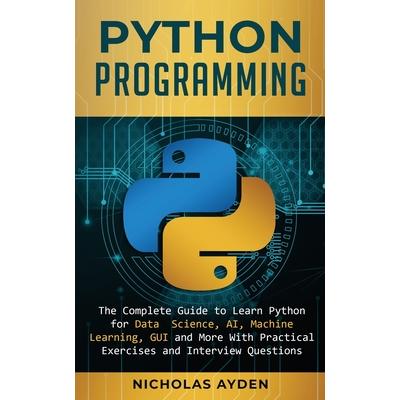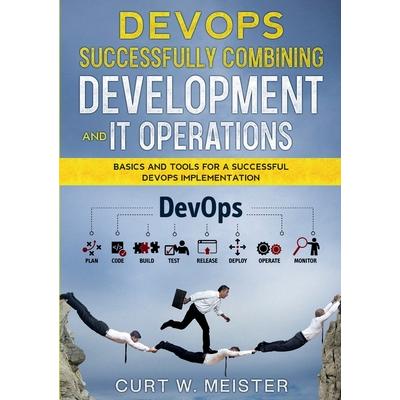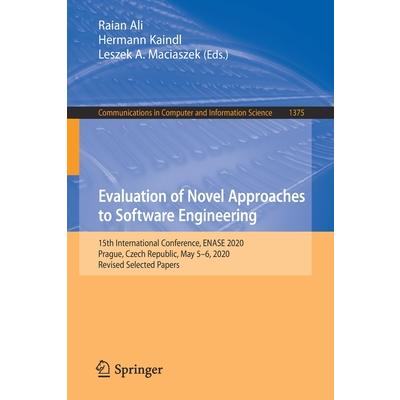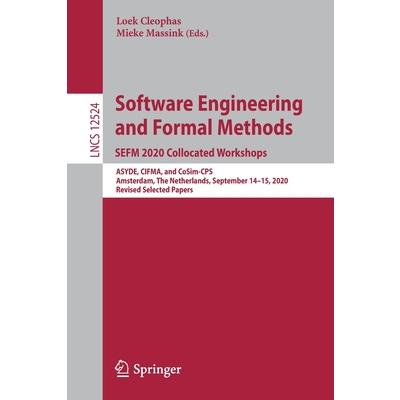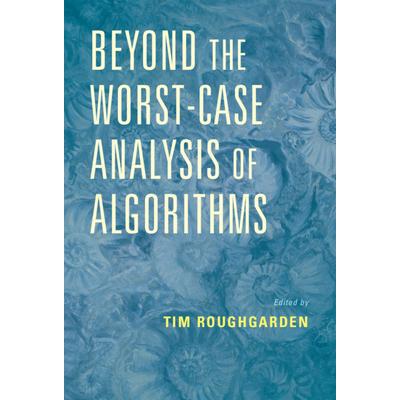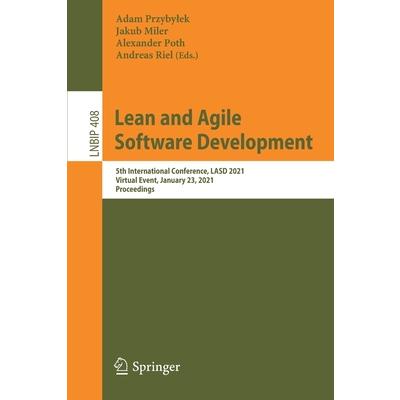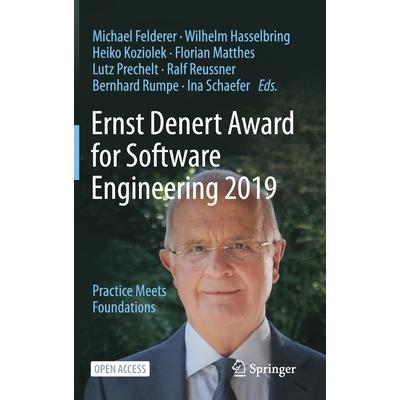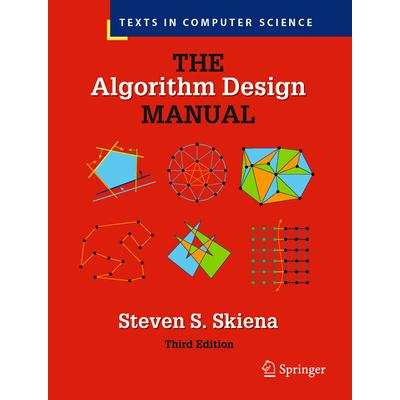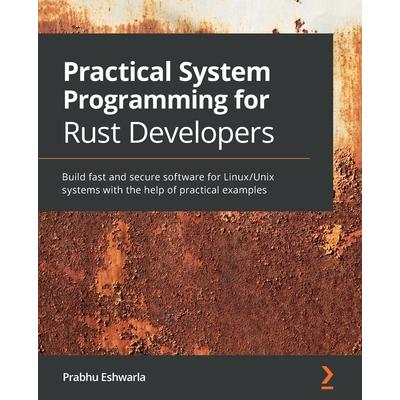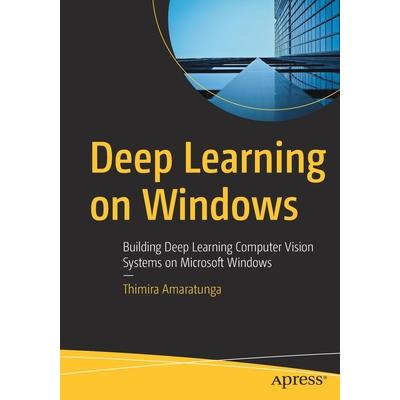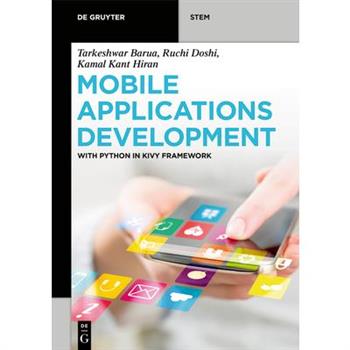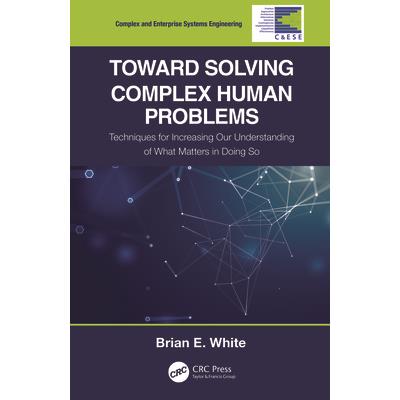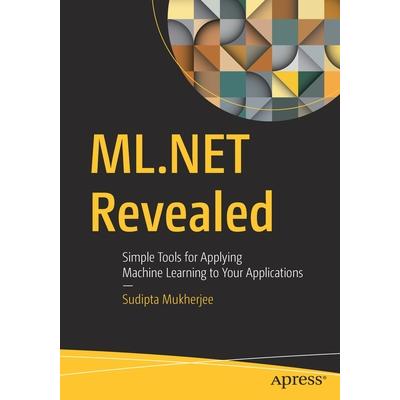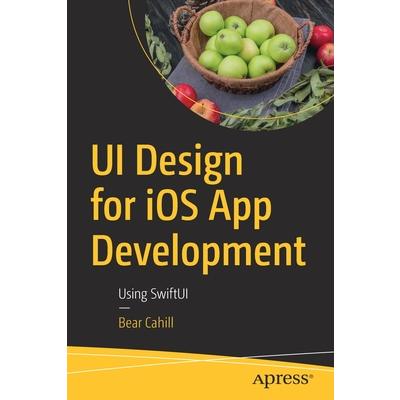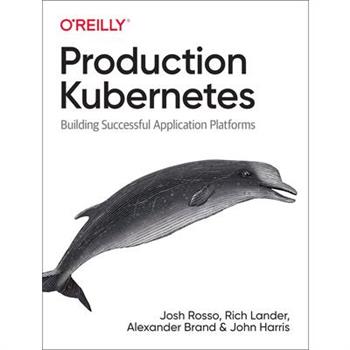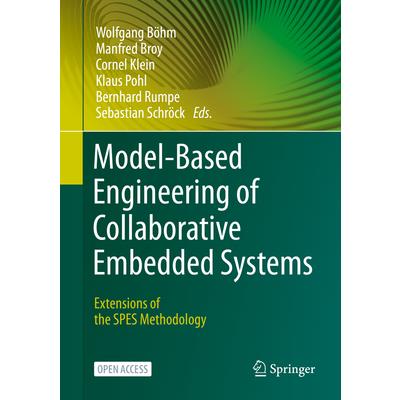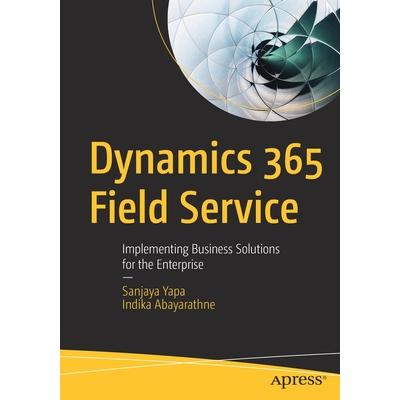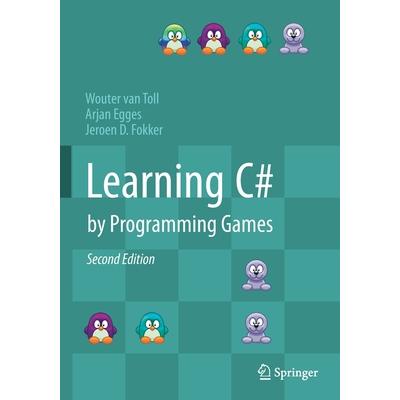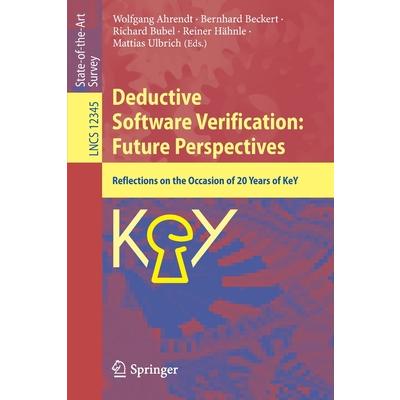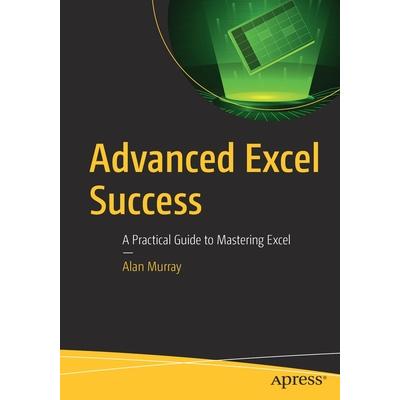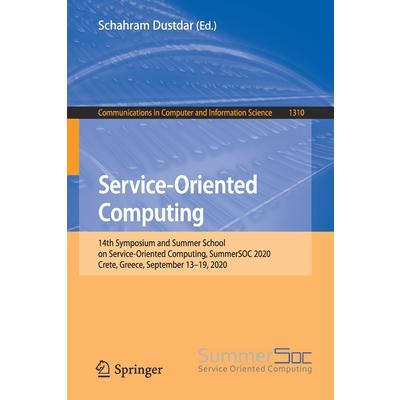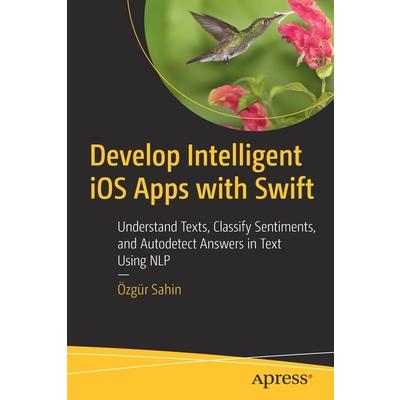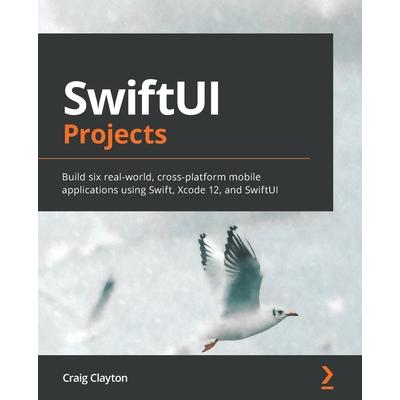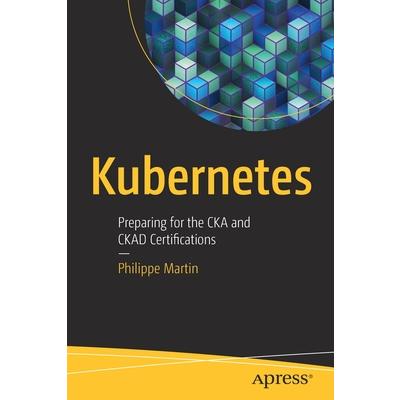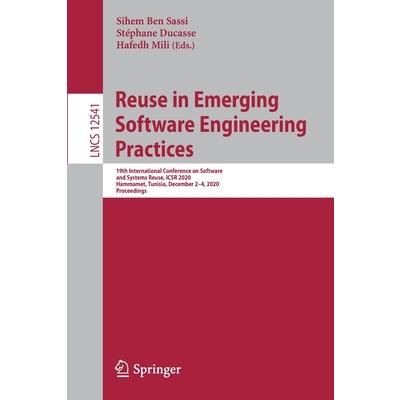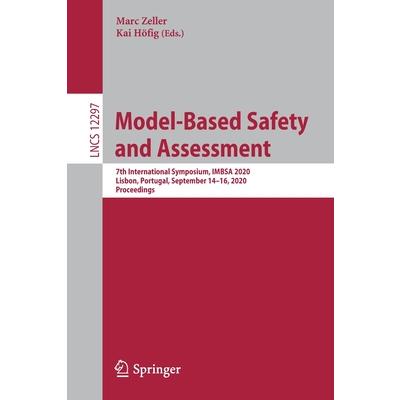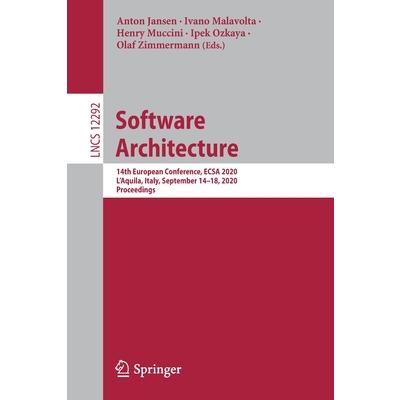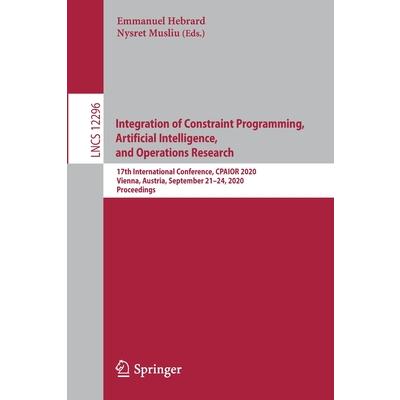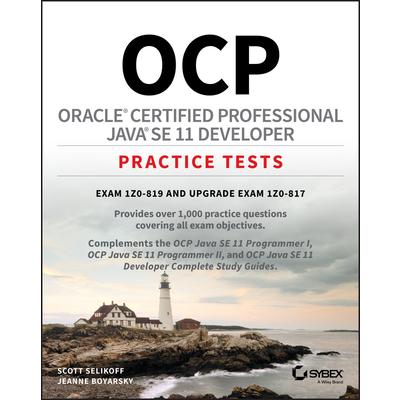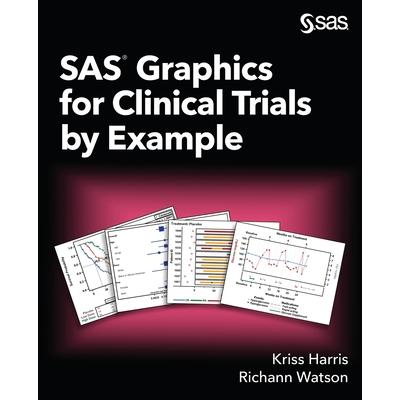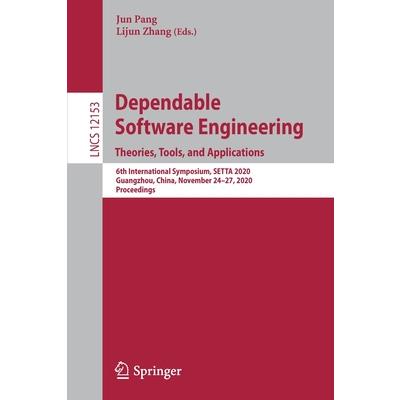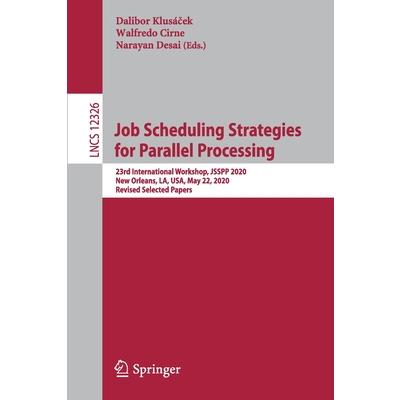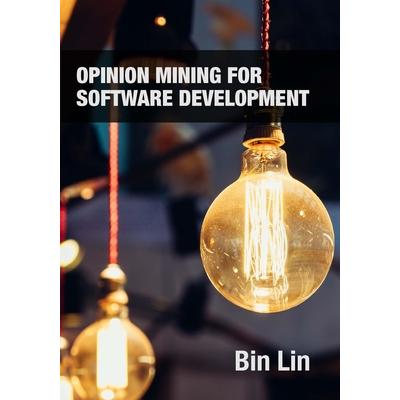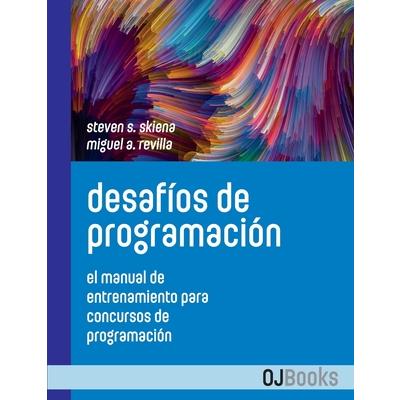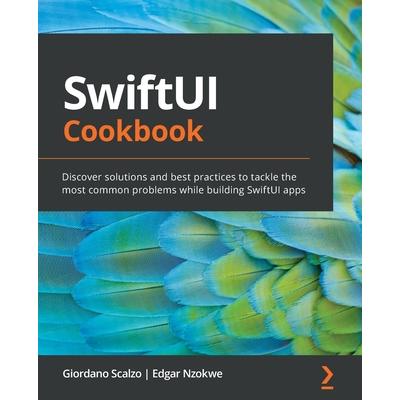What’s Where in the APPLE - Enhanced Edition
What's Where in the APPLE - Enhanced Edition: Volume 1 - Guide Volume 1: A comprehensive guide to the hardware and firmware organization and architecture of the Apple II computer, What's Where in the Apple discusses concepts and programming techniques useful for mastering the inner workings and hidden mechanisms of the Apple II (in Volume 1). This new Enhanced Edition is the most complete and accurate edition ever created, featuring improved readability, new coverage of the Apple IIe and Apple IIc, and a forward and historical perspective by publishing legend Robert Tripp. The numerical Atlas and alphabetical Gazetteer (in Volume 2) guide you to over 2,700 memory locations of PEEKs, POKEs, and CALLs in DOS and ProDOS. Applesoft and Integer BASIC users will learn how to speed up and streamline programs. Assembly language users will discover routines that simplify coding and interfacing. All users will find this book helpful to understand the Apple II and essential for mastering it!
Python Programming
Are you keen to learn Python Programming? Have you wanted to learn how to become a Python programmer? If so, this guide is the perfect match for people just like you!A general-purpose programming language, whose expansion and popularity is relatively recent. This is Python, a commitment to simplicity, versatility, and rapidity of development.Python is a platform-independent and object-oriented scripting language prepared to perform any type of programming language, from Windows applications to network servers or even web pages. Python is an interpreted language. That means that, unlike languages like C and its variants, Python does not need to be compiled before it is run. Other interpreted languages include PHP and Ruby.Some benefits of using Python-Python comprises a huge standard library for most Internet platforms like Email, HTML, etc.Provide easy readability due to the use of square bracketsEasy-to-learn for beginnersHaving the built-in data types saves programming time and effort from declaring variablesInside this book, Python Programming: The Complete Guide to Learn Python for Data Science, AI, Machine Learning, GUI, and More With Practical Exercises and Interview Questions, you will learn a valuable skill that will improve your coding expertise!Here's what we will talk about in this book: Python FeaturesBasics of PythonData Structures & Object-Oriented PythonFile managementConditionals, Iterables & Regex in PythonSimple recap projectsFiles & Error Handling In PythonSome powerful tips and tricks for beginner Python programmers that will fast-track your journey to becoming a masterAnd Much More!Why wait any longer? "Add to Cart" to receive your book instantly!
DevOps - Successfully Combining Development and IT Operations
DevOps is on everyone's lips. The combination of agile development approaches such as Scrum, Kanban, Extreme Programming or others with future-proof service management approaches seems to be the guarantee for success for modern IT organizations. Is this just the next fad in IT or is there actual optimization potential here and if so, what are the prerequisites and framework conditions that are important for this? The author, a proven expert for agile methods and DevOps, shows where DevOps can be used beneficially and which techniques and methods are target-oriented. This includes approaches such as Continuous Delivery as well as the concept of anti-fragility or the integration of approaches from Lean Thinking. This book is aimed at newcomers to the subject who want to gain a good overview and a basis for decision-making with little effort.
Evaluation of Novel Approaches to Software Engineering
This book constitutes selected, revised and extended papers of the 15th International Conference on Evaluation of Novel Approaches to Software Engineering, ENASE 2020, held in virtual format, in May 2020.The 19 revised full papers presented were carefully reviewed and selected from 96 submissions. The papers included in this book contribute to the understanding of relevant trends of current research on novel approaches to software engineering for the development and maintenance of systems and applications, specically with relation to: model-driven software engineering, requirements engineering, empirical software engineering, service-oriented software engineering, business process management and engineering, knowledge management and engineering, reverse software engineering, software process improvement, software change and configuration management, software metrics, software patterns and refactoring, application integration, software architecture, cloud computing, and formalmethods.
Software Engineering and Formal Methods. Sefm 2020 Collocated Workshops
This volume constitutes the revised selected papers from the three workshops collocated with the 18th International Conference on Software Engineering and Formal Methods, SEFM 2020, held in Amsterdam, The Netherlands, in September 2020. The 15 full papers presented together with 8 short papers in this volume were carefully reviewed and selected from a total of 35 submissions. The contributions that are collected in this volume have been selected from the presentations at the following workshops: ASYDE 2020: Second International Workshop on Automated and Verifiable Software System Development; CIFMA 2020: Second International Workshop on Cognition: Interdisciplinary Foundations, Models and Applications; and CoSim-CPS 2020: Fourth International Workshop on Formal Co-Simulation of Cyber-Physical Systems. Due to the Corona pandemic this event was held virtually.
Beyond the Worst-Case Analysis of Algorithms
There are no silver bullets in algorithm design, and no single algorithmic idea is powerful and flexible enough to solve every computational problem. Nor are there silver bullets in algorithm analysis, as the most enlightening method for analyzing an algorithm often depends on the problem and the application. However, typical algorithms courses rely almost entirely on a single analysis framework, that of worst-case analysis, wherein an algorithm is assessed by its worst performance on any input of a given size. The purpose of this book is to popularize several alternatives to worst-case analysis and their most notable algorithmic applications, from clustering to linear programming to neural network training. Forty leading researchers have contributed introductions to different facets of this field, emphasizing the most important models and results, many of which can be taught in lectures to beginning graduate students in theoretical computer science and machine learning.
Lean and Agile Software Development
This book constitutes the proceedings of the 5th International Conference on Lean and Agile Software Development, LASD 2021, which was held online on January 23, 2021. The conference received a total of 32 submissions, of which 10 full and 2 short papers are included in this volume. In addition, one keynote paper is also included. To live the agile mindset, the LASD conference focuses on highly relevant research outcomes and fosters their way into practice. Topics discussed in this volume range from teams under COVID-19 through women in Agile, to product road-mapping and non-functional requirements.
An Atypical ASP.NET Core 5 Design Patterns Guide
A .NET developer's guide to crafting robust, maintainable, and flexible web apps by leveraging C# 9 and .NET 5 features and component-scale and application-scale design patternsKey FeaturesApply software design patterns effectively, starting small and progressing to cloud-scaleDiscover modern application architectures such as vertical slice, clean architecture, and event-driven microservicesExplore ASP.NET design patterns, from options to full-stack web development using BlazorBook DescriptionDesign patterns are a set of solutions to many of the common problems occurring in software development. Knowledge of these design patterns helps developers and professionals to craft software solutions of any scale.ASP.NET Core 5 Design Patterns starts by exploring basic design patterns, architectural principles, dependency injection, and other ASP.NET Core mechanisms. You'll explore the component scale as you discover patterns oriented toward small chunks of the software, and then move to application-scale patterns and techniques to understand higher-level patterns and how to structure the application as a whole. The book covers a range of significant GoF (Gangs of Four) design patterns such as strategy, singleton, decorator, facade, and composite. The chapters are organized based on scale and topics, allowing you to start small and build on a strong base, the same way that you would develop a program. With the help of use cases, the book will show you how to combine design patterns to display alternate usage and help you feel comfortable working with a variety of design patterns. Finally, you'll advance to the client side to connect the dots and make ASP.NET Core a viable full-stack alternative.By the end of the book, you'll be able to mix and match design patterns and have learned how to think about architecture and how it works.What You Will LearnApply the SOLID principles for building flexible and maintainable softwareGet to grips with .NET 5 dependency injectionWork with GoF design patterns such as strategy, decorator, and compositeExplore the MVC patterns for designing web APIs and web applications using RazorDiscover layering techniques and tenets of clean architectureBecome familiar with CQRS and vertical slice architecture as an alternative to layeringUnderstand microservices, what they are, and what they are notBuild ASP.NET UI from server-side to client-side BlazorWho this book is forThis design patterns book is for beginners as well as intermediate-level software and web developers with some knowledge of .NET who want to write flexible, maintainable, and robust code for building scalable web applications. Knowledge of C# programming and an understanding of web concepts like HTTP is necessary.
Ernst Denert Award for Software Engineering 2019
This open access book provides an overview of the dissertations of the five nominees for the Ernst Denert Award for Software Engineering in 2019. The prize, kindly sponsored by the Gerlind & Ernst Denert Stiftung, is awarded for excellent work within the discipline of Software Engineering, which includes methods, tools and procedures for better and efficient development of high quality software. An essential requirement for the nominated work is its applicability and usability in industrial practice. The book contains five papers describing the works by Sebastian Baltes (U Trier) on Software Developers'Work Habits and Expertise, Timo Greifenberg's thesis on Artefaktbasierte Analyse modellgetriebener Softwareentwicklungsprojekte, Marco Konersmann's (U Duisburg-Essen) work on Explicitly Integrated Architecture, Marija Selakovic's (TU Darmstadt) research about Actionable Program Analyses for Improving Software Performance, and Johannes Sp瓣th's (Paderborn U)thesis on Synchronized Pushdown Systems for Pointer and Data-Flow Analysis - which actually won the award. The chapters describe key findings of the respective works, show their relevance and applicability to practice and industrial software engineering projects, and provide additional information and findings that have only been discovered afterwards, e.g. when applying the results in industry. This way, the book is not only interesting to other researchers, but also to industrial software professionals who would like to learn about the application of state-of-the-art methods in their daily work.
The Algorithm Design Manual
"My absolute favorite for this kind of interview preparation is Steven Skiena's The Algorithm Design Manual. More than any other book it helped me understand just how astonishingly commonplace ... graph problems are -- they should be part of every working programmer's toolkit. The book also covers basic data structures and sorting algorithms, which is a nice bonus. ... every 1 - pager has a simple picture, making it easy to remember. This is a great way to learn how to identify hundreds of problem types." (Steve Yegge, Get that Job at Google)"Steven Skiena's Algorithm Design Manual retains its title as the best and most comprehensive practical algorithm guide to help identify and solve problems. ... Every programmer should read this book, and anyone working in the field should keep it close to hand. ... This is the best investment ... a programmer or aspiring programmer can make." (Harold Thimbleby, Times Higher Education)"It is wonderful to open to a random spot and discover aninteresting algorithm. This is the only textbook I felt compelled to bring with me out of my student days.... The color really adds a lot of energy to the new edition of the book!" (Cory Bart, University of Delaware)"The is the most approachable book on algorithms I have." (Megan Squire, Elon University)---This newly expanded and updated third edition of the best-selling classic continues to take the "mystery" out of designing algorithms, and analyzing their efficiency. It serves as the primary textbook of choice for algorithm design courses and interview self-study, while maintaining its status as the premier practical reference guide to algorithms for programmers, researchers, and students. The reader-friendly Algorithm Design Manual provides straightforward access to combinatorial algorithms technology, stressing design over analysis. The first part, Practical Algorithm Design, provides accessible instruction on methods for designing and analyzing computer algorithms. The second part, the Hitchhiker's Guide to Algorithms, is intended for browsing and reference, and comprises the catalog of algorithmic resources, implementations, and an extensive bibliography. NEW to the third edition: -- New and expanded coverage of randomized algorithms, hashing, divide and conquer, approximation algorithms, and quantum computing -- Provides full online support for lecturers, including an improved website component with lecture slides and videos -- Full color illustrations and code instantly clarify difficult concepts -- Includes several new "war stories" relating experiences from real-world applications -- Over 100 new problems, including programming-challenge problems from LeetCode and Hackerrank. -- Provides up-to-date links leading to the best implementations available in C, C++, and Java Additional Learning Tools: -- Contains a unique catalog identifying the 75 algorithmic problems that arise most often in practice, leading the reader down the right path to solve them -- Exercises include "job interview problems" from major software companies -- Highlighted "take home lessons" emphasize essential concepts -- The "no theorem-proof" style provides a uniquely accessible and intuitive approach to a challenging subject -- Many algorithms are presented with actual code (written in C) -- Provides comprehensive references to both survey articles and the primary literature Written by a well-known algorithms researcher who received the IEEE Computer Science and Engineering Teaching Award, this substantially enhanced third edition of The Algorithm Design Manual is an essential learning tool for students and professionals needed a solid grounding in algorithms. Professor Skiena is also the author of the popular Springer texts, The Data Science Design Manual and Programming Challenges: The Programming
Pocket guide to the Professional Scrum Master Certification (PSM 1)
The Professional Scrum Master Training of the Scrum.org is for many people the first step of a certification in the context of Scrum and agile development approaches. This certification documents like no other a deep understanding of Scrum as it is presented in the Scrum Guide. As simple and clear as these Scrum basics are described, it is however difficult for many people to put the principles and ideas presented therein into practice. This is a challenge both in their daily work and in passing the PSM certification exam. Marcus Marfurt, himself a Scrum Master and trainer for a long time, shows the transfer from the Scrum Guide to the practice of a Scrum Master's activity. The knowledge imparted is an optimal preparation for the Scrum Master certification exam.
Practical System programming for Rust developers
Explore various Rust features, data structures, libraries, and toolchain to build modern systems software with the help of hands-on examplesKey Features: Learn techniques to design and build system tools and utilities in RustExplore the different features of the Rust standard library for interacting with operating systemsGain an in-depth understanding of the Rust programming language by writing low-level softwareBook Description: Modern programming languages such as Python, JavaScript, and Java have become increasingly accepted for application-level programming, but for systems programming, C and C++ are predominantly used due to the need for low-level control of system resources. Rust promises the best of both worlds: the type safety of Java, and the speed and expressiveness of C++, while also including memory safety without a garbage collector. This book is a comprehensive introduction if you're new to Rust and systems programming and are looking to build reliable and efficient systems software without C or C++.The book takes a unique approach by starting each topic with Linux kernel concepts and APIs relevant to that topic. You'll also explore how system resources can be controlled from Rust. As you progress, you'll delve into advanced topics. You'll cover network programming, focusing on aspects such as working with low-level network primitives and protocols in Rust, before going on to learn how to use and compile Rust with WebAssembly. Later chapters will take you through practical code examples and projects to help you build on your knowledge.By the end of this Rust programming book, you will be equipped with practical skills to write systems software tools, libraries, and utilities in Rust.What you will learn: Gain a solid understanding of how system resources are managedUse Rust confidently to control and operate a Linux or Unix systemUnderstand how to write a host of practical systems software tools and utilitiesDelve into memory management with the memory layout of Rust programsDiscover the capabilities and features of the Rust Standard LibraryExplore external crates to improve productivity for future Rust programming projectsWho is this book for: This book is for developers with basic knowledge of Rust but little to no knowledge or experience of systems programming. System programmers who want to consider Rust as an alternative to C or C++ will also find this book useful.
DevOps For Beginners
Have you been looking for a way to boost your skills and become a master in DevOps for your business or career in software development but lack an excellent, high-quality guide to assist you get there?And are you looking for a guide that is simple, assuring and easy to follow?If you've answered YES, keep reading...You Are About To Discover The Ins And Outs Of Dev-Ops, Including How To Leverage Its Power To Your Advantage In Your Business Or Career!It goes without saying that DevOps is one of the greatest inventions in software development. It came to satisfy a need to get away from the traditional software design for efficiency, collaboration and productivity in development processes, and by extension to boost business growth.Did you know that businesses that adopt DevOps enjoy up to 60% more revenue rates and profit than their reticent counterparts?Unfortunately, great as it is, DevOps remains one of the most misunderstood concepts- even by tutors across the world!Similarly, for someone who's just getting into the software development scene or someone wh0 has drowned in the "Waterfall" methodology a couple of times before, it may seem like something a little complex or one that requires some skill, or lots of effort and time to master.If you can relate, you must have wondered: What's DevOps all about, and is there a way to learn it quickly?What does DevOps entail?How exactly would I benefit from learning DevOps?How and where do I get started?Is DevOps agile? How does it work?So if such questions have been keeping you from making the next important step in your career or business with DevOps, then this simple, clear and straightforward guide is here for you.With it, you'll learn: What DevOps is and why you need itThe features of DevOps architecture The potential benefits and risks of using DevOpsWhat you need to know about the DevOps lifecycleThe ins and outs of the DevOps architectureThe workflow and principles of DevOpsThe DevOps tools you need to know and useHow DevOps automation worksWho DevOps engineers are, and the roles they playThe methodologies and pipelines of DevOps you need to familiarize yourself withThe DevOps Amazon Web ServicesThe tools and tutorials for DevOps, including their features and benefitsHow to install GIT on Mac, Linux and Windows...And much more!Do you prefer practical guides that you can implement as you go (not ones that are heavy on theory- that require taking loads of caffeine to complete)?Do you want a beginners' book that is exciting to follow and well-structured for quick comprehension?Then don't let this one slip away.Even if this is your first time actually wanting to learn DevOps, this book will hold you by the hand until you feel confident about it!
Deep Learning on Windows
Build deep learning and computer vision systems using Python, TensorFlow, Keras, OpenCV, and more, right within the familiar environment of Microsoft Windows. The book starts with an introduction to tools for deep learning and computer vision tasks followed by instructions to install, configure, and troubleshoot them. Here, you will learn how Python can help you build deep learning models on Windows. Moving forward, you will build a deep learning model and understand the internal-workings of a convolutional neural network on Windows. Further, you will go through different ways to visualize the internal-workings of deep learning models along with an understanding of transfer learning where you will learn how to build model architecture and use data augmentations. Next, you will manage and train deep learning models on Windows before deploying your application as a web application. You'll also do some simple image processing and work with computer vision options that will help you build various applications with deep learning. Finally, you will use generative adversarial networks along with reinforcement learning. After reading Deep Learning on Windows, you will be able to design deep learning models and web applications on the Windows operating system. What You Will LearnUnderstand the basics of Deep Learning and its historyGet Deep Learning tools working on Microsoft WindowsUnderstand the internal-workings of Deep Learning models by using model visualization techniques, such as the built-in plot_model function of Keras and third-party visualization toolsUnderstand Transfer Learning and how to utilize it to tackle small datasetsBuild robust training scripts to handle long-running training jobsConvert your Deep Learning model into a web applicationGenerate handwritten digits and human faces with DCGAN (Deep Convolutional Generative Adversarial Network)Understand the basics of Reinforcement Learning Who This Book Is For AI developers and enthusiasts wanting to work on the Windows platform.
Building Solutions with Microsoft Teams
Explore Microsoft Teams and use its principal tools such as Node.js, npm, Yeoman, Gulp, TypeScript, and React to help you develop for Teams better. This book covers the core components and use cases for Teams apps and guides you through ideas for automation, provisioning, and implementation. Building Solutions with Microsoft Teams starts with an overview of the Microsoft Teams developer platform followed by how to set up your environment for building apps and solutions with Teams. You will then go through various features of conversational bots and learn how to create a bot. You will gain an understanding of the messaging extension and command actions along with tabs for personal, groups, and teams contexts. Moving forward, you will work with SharePoint and Teams together via SharePoint Framework. Finally, you will manage the Teams life cycle and see design guidelines supported by various case studies. After reading thisbook, you will be able to integrate solutions from Power Apps, Power Automate, Power BI, and Power Virtual agents by using accelerators. You will also be able to leverage your existing skills from SharePoint Framework development. What You Will Learn Extend the Teams developer platform capabilitiesUnderstand Microsoft Graph, including lifecycle management, collaboration, calling, and online meetingsCreate an app package for your Microsoft Teams appConnect web services to Microsoft Teams with webhooks Who This Book Is ForMicrosoft Teams developers.
Mobile Applications Development
The book covers the concepts of Python programming language along with mobile application development. Starting from fundamentals, the book continues with the explanation of mobile app development using Kivy framework. All the chapters offer questions and exercises for to better understanding of the subject. At the end of the book some hands-on projects are given to help the readers to improve their programming and project development skills.
Toward Solving Complex Human Problems
This book serves three basic purposes: (1) a tutorial-type reference for complex systems engineering (CSE) concepts and associated terminology, (2) a recommendation of a proposed methodology showing how the evolving practice of CSE can lead to a more unified theory, and (3) a complex systems (CSs) initiative for organizations to invest some of their resources toward helping to make the world a better place. A wide variety of technical practitioners-e.g., developers of new or improved systems (particularly systems engineers), program and project managers, associated staff/workers, funders and overseers, government executives, military officers, systems acquisition personnel, contract specialists, owners of large and small businesses, professional society members, and CS researchers-may be interested in further exploring these topics. Readers will learn more about CS characteristics and behaviors and CSE principles and will therefore be able to focus on techniques that will better serve them in their everyday work environments in dealing with complexity. The fundamental observation is that many systems inherently involve a deeper complexity because stakeholders are engaged in the enterprise. This means that such CSs are more difficult to invent, create, or improve upon because no one can be in total control since people cannot be completely controlled. Therefore, one needs to concentrate on trying to influence progress, then wait a suitable amount of time to see what happens, iterating as necessary. With just three chapters in this book, it seems to make sense to provide a tutorial introduction that readers can peruse only as necessary, considering their background and understanding, then a chapter laying out the suggested artifacts and methodology, followed by a chapter emphasizing worthwhile areas of application.
ML.Net Revealed
Get introduced to ML.NET, a new open source, cross-platform machine learning framework from Microsoft that is intended to democratize machine learning and enable as many developers as possible.Dive in to learn how ML.NET is designed to encapsulate complex algorithms, making it easy to consume them in many application settings without having to think about the internal details. You will learn about the features that do the necessary "plumbing" that is required in a variety of machine learning problems, freeing up your time to focus on your applications. You will understand that while the infrastructure pieces may at first appear to be disconnected and haphazard, they are not. Developers who are curious about trying machine learning, yet are shying away from it due to its perceived complexity, will benefit from this book. This introductory guide will help you make sense of it all and inspire you to try out scenarios and code samples that can be used in many real-world situations. What You Will LearnCreate a machine learning model using only the C# languageBuild confidence in your understanding of machine learning algorithms Painlessly implement algorithms Begin using the ML.NET library softwareRecognize the many opportunities to utilize ML.NET to your advantageApply and reuse code samples from the bookUtilize the bonus algorithm selection quick references available online Who This Book Is ForDevelopers who want to learn how to use and apply machine learning to enrich their applications
Ui Design for IOS App Development
Design is a challenge for most developers. Without a background or training in user interface skills, it's hard to navigate what choices make the best sense for the end user. This book shows you how to migrate from Storyboards to SwiftUI to design dynamic and engaging UIs for iOS apps. SwiftUI is new in iOS 13 but you may want to support past versions as well. To satisfy this, you'll start by reviewing nib/xib files and Storyboards and then move into SwiftUI and explore how to design apps in both UI toolkits. Gaining a firm base in technologies old and new will allow you to future proof your UI during this period of transition. Developers generally want to stay in code, but UI development tends to be a visual effort. This book takes a very structured and code-like approach to UI design to take the fear away. You'll grasp Storyboards and Auto-Layout/Constraints, while also learning to move past them with the easier options in SwiftUI. A clear understanding of both technologies is key to keeping your most functional coding and also making things look right. With UI Design for iOS App Development, you'll learn SwiftUI easily and get back into your code quickly.What You'll LearnBuild iOS app UIs both in current and new paradigmsWork with Storyboards and Auto-Layout/ConstraintsDesign UIs in a coder friendly wayWho This Book Is ForiOS developers building a strong foundation in UI design to fill in the gaps from their training. For veteran developers, it's vital to be able to match your coding skills with equal UI/UX abilities.
Production Kubernetes
Kubernetes has become the dominant container orchestrator, but many organizations that have recently adopted this system are still struggling to run actual production workloads. In this practical book, four software engineers from VMware bring their shared experiences running Kubernetes in production and provide insight on key challenges and best practices. The brilliance of Kubernetes is how configurable and extensible the system is, from pluggable runtimes to storage integrations. For platform engineers, software developers, infosec, network engineers, storage engineers, and others, this book examines how the path to success with Kubernetes involves a variety of technology, pattern, and abstraction considerations. With this book, you will: Understand what the path to production looks like when using Kubernetes Examine where gaps exist in your current Kubernetes strategy Learn Kubernetes's essential building blocks--and their trade-offs Understand what's involved in making Kubernetes a viable location for applications Learn better ways to navigate the cloud native landscape
Model-Based Engineering of Collaborative Embedded Systems
This Open Access book presents the results of the "Collaborative Embedded Systems" (CrESt) project, aimed at adapting and complementing the methodology underlying modeling techniques developed to cope with the challenges of the dynamic structures of collaborative embedded systems (CESs) based on the SPES development methodology.In order to manage the high complexity of the individual systems and the dynamically formed interaction structures at runtime, advanced and powerful development methods are required that extend the current state of the art in the development of embedded systems and cyber-physical systems. The methodological contributions of the project support the effective and efficient development of CESs in dynamic and uncertain contexts, with special emphasis on the reliability and variability of individual systems and the creation of networks of such systems at runtime.The project was funded by the German Federal Ministry of Education and Research (BMBF), and the case studies are therefore selected from areas that are highly relevant for Germany's economy (automotive, industrial production, power generation, and robotics). It also supports the digitalization of complex and transformable industrial plants in the context of the German government's "Industry 4.0" initiative, and the project results provide a solid foundation for implementing the German government's high-tech strategy "Innovations for Germany" in the coming years.
Dynamics 365 Field Service
Configure and customize Microsoft Dynamics 365 Field Services to help your organization deliver onsite service to customer locations. This book will guide you in setting up and implementing Dynamics 365 Field Services to automate workflow and schedule algorithms for mobile users.The book starts with an introduction to Field Services and setting up your Dynamics 365 subscription. Next, you will configure your application. You are shown how to allocate work, manage resources, and move inventory. You will configure both Field Services and the new Field Services Mobile app. One of the main topics covered is applying security to both Field Services and the Field Services Mobile App and how to use both flavors of the application to implement effective solutions. You will go through examples to understand and apply the concepts and features for configuration of Field Services. You also will learn best practices for configuring and customizing Field Services.After reading this book, you will be able to develop and implement enterprise-scale solutions using Dynamics 365 Field Services.What Will You LearnCreate and process Work OrdersManage inventory movement in the fieldSet up security in Field Services and Field Services Mobile AppGenerate Work Orders with agreementUtilize Microsoft Power Automate with Field ServiceWho Is This Book ForTechnical and functional consultants who have Dynamics 365 CE development experience
User-Driven Applications for Research and Science
Build programs that give users full control of their applications in order to meet end users' unique needs and scenarios. Over the last couple of decades, there has been an ongoing quandary in the developer world. Developers are enlisted to build applications to meet users' demands; users get applications that meet the criteria from the developers' point of view, but they are far from what the users envisioned. The difference is often wide and nearly catastrophic in fields where users' actions are nearly impossible to predict, such as science, research work, financial analysis, and others. End users get frustrated with the applications because they were not built with their use cases in mind. For a long time, it was assumed that the developers who created the code should drive their programs and be responsible for all scenarios. While generally not an issue in simple programs, this view is wrong for complex applications in the field of science. These end users are the best specialists in their respective fields and need applications to work beyond the scenarios prepared and allowed for by developers.This book teaches you methods to manage your applications in a way that gives control to your target end users. You will learn proven methods using an easy and predictable instrument, the all-powerful algorithm, to create objects that are movable and re-sizable by users.Get ready to learn by example, using an algorithm of total movability and experience, implemented in different situations. You will begin with the simplest code examples and work your way up to real, complicated programs applicable in STEM fields.What You Will Learn Pass the control of your programs from developers to end usersUnderstand that the most valuable result is not the algorithm itself, but the consequence of using itBuild user-driven applications that include total movability of screen elementsSee concepts applied in real situations and scenariosBe exposed to well-known programs and tasks for developing user-driven applicationsAccess accompanying code written in C# and available on GitHub Who This Book Is ForDevelopers who want to write or design programs that give their target end users full control over their application
Learning C# by Programming Games
1 Building Your First Game Application.- 2 What Is Programming?.- 3 Game Programming Basics.- 4 Creating a Game World.- 5 Showing what the Player is Doing.- 6 Reacting to Player Input.- 7 Basic Game Objects.- 8 Communication and Interaction Between Objects.- 9 A Limited Number of Lives.- 10 Organizing Game Objects.- 11 Finishing the Game.- 12 Dealing with Different Screen Sizes.- 13 Arrays and Collections.- 14 Game Objects in a Structure.- 15 Gameplay Programming.- 16 Finishing the Game.- 17 Better Game State Management.- 18 User Interfaces and Menus.- 19 Loading Levels from Files.- 20 Gameplay Programming.- 21 Finishing the Game.- 22 Creating the Main Game Structure.- 23 Animated Game Objects.- 24 Game Physics.- 25 Intelligent Enemies.- 26 Finishing the Game.
Deductive Software Verification: Future Perspectives
This book presents reflections on the occasion of 20 years on the KeY project that focuses on deductive software verification.Since the inception of the KeY project two decades ago, the area of deductive verification has evolved considerably. Support for real world programming languages by deductive program verification tools has become prevalent. This required to overcome significant theoretical and technical challenges to support advanced software engineering and programming concepts. The community became more interconnected with a competitive, but friendly and supportive environment. We took the 20-year anniversary of KeY as an opportunity to invite researchers, inside and outside of the project, to contribute to a book capturing some state-of-the-art developments in the field. We received thirteen contributions from recognized experts of the field addressing the latest challenges. The topics of the contributions range from tool development, effciency and usability considerations to novel specification and verification methods. This book should offer the reader an up-to-date impression of the current state of art in deductive verification, and we hope, inspire her to contribute to the field and to join forces. We are looking forward to meeting you at the next conference, to listen to your research talks and the resulting fruitful discussions and collaborations.
Service-Oriented Computing
This book constitutes the proceedings of the 18th International Conference on Service-Oriented Computing, ICSOC 2020, which was planned to take place in Dubai, UAE, during December 14-17, 2020. Due to the COVID-19 pandemic the conference was held online. The 23 full, 16 short, and 3 industry papers included in this volume were carefully reviewed and selected from 137 submissions. They were organized in topical sections named: microservices; Internet of Things; services at the edge; machine learning for service oriented computing; smart data and smart services; service oriented technology trends; industry papers.
Software Verification
This book constitutes the refereed proceedings of the 12th International Conference on Verified Software, VSTTE 2020, and the 13th International Workshop on Numerical Software Verification, NSV 2020, held in Los Angeles, CA, USA, in July 2020. Due to COVID-19 pandemic the conference was held virtually. The 13 papers presented in this volume were carefully reviewed and selected from 21 submissions. The papers describe large-scale verification efforts that involve collaboration, theory unification, tool integration, and formalized domain knowledge as well as novel experiments and case studies evaluating verification techniques and technologies. The conference was co-located with the 32nd International Conference on Computer-Aided Verification (CAV 2020).
Advanced Excel Success
Explore advanced skills in Excel and gain an amazing array of tricks and tools to increase your productivity. This book discusses new techniques such as power functions, chart tricks, and many more to master Excel. Advanced Excel Success starts with a few useful data tools in Excel followed by advanced formulas that will help you increase productivity. Here, you will learn power functions that aggregate, return ranges, and much more. Further, you will look at custom formatting tricks along with advanced charting tricks. These include automatically changing the color of key metrics, dynamically sorting chart data, and building creative labels. Next, you will understand the role of Power Query which is one of the most important upgrades in Excel. Power Query is the Microsoft Data Connectivity and Data Preparation technology that enables business users to seamlessly access data stored in hundreds of data sources and reshape it to fit their needs, with an easy-to-use, engaging, and no-code user experience. Finally, you will learn Power Pivot which is a distinct feature in Excel that goes beyond spreadsheets. After reading this book, you will be well equipped to work on Excel with its advanced features. What You Will Learn Work with the most useful data tools Understand formulas and the ten power functionsUse advanced chart and formatting tricks and techniques for dynamic and effective visualsWork with power tools Who This Book Is For Excel users looking to take the next step to expert level.
Service-Oriented Computing
This book constitutes the refereed proceedings of the 14th Symposium and Summer School on Service-Oriented Computing, SummerSOC 2020, held in Crete, Greece, in September 2020.*The 9 full and 2 short papers were carefully reviewed and selected from 23 submissions. The papers mainly focus on IoT and cyber-physical systems, advanced application areas, cloud and edge, and service-based applications. *The conference was held virtually due to the COVID-19 pandemic.
Develop Intelligent IOS Apps with Swift
Build smart apps capable of analyzing language and performing language-specific tasks, such as script identification, tokenization, lemmatization, part-of-speech tagging, and named entity recognition. This book will get you started in the world of building literate, language understanding apps. Cutting edge ML tools from Apple like CreateML, CoreML, and TuriCreate will become natural parts of your development toolbox as you construct intelligent, text-based apps. You'll explore a wide range of text processing topics, including reprocessing text, training custom machine learning models, converting state-of-the-art NLP models to CoreML from Keras, evaluating models, and deploying models to your iOS apps. You'll develop sample apps to learn by doing. These include apps with functions for detecting spam SMS, extracting text with OCR, generating sentences with AI, categorizing the sentiment of text, developing intelligent apps that read text and answers questions, converting speech to text, detecting parts of speech, and identifying people, places, and organizations in text. Smart app development involves mainly teaching apps to learn and understand input without explicit prompts from their users. These apps understand what is in images, predict future behavior, and analyze texts. Thanks to natural language processing, iOS can auto-fix typos and Siri can understand what you're saying. With Apple's own easy-to-use tool, Create ML, they've broughtaccessible ML capabilities to developers. Develop Intelligent iOS Apps with Swift will show you how to easily create text classification and numerous other kinds of models. What You'll Learn Incorporate Apple tools such as CreateML and CoreML into your Swift toolbox Convert state-of-the-art NLP models to CoreML from Keras Teach your apps to predict words while users are typing with smart auto-complete Who This Book Is For Novice developers and programmers who wish to implement natural language processing in their iOS applications and those who want to learn Apple's native ML tools.
SwiftUI Projects
Learn SwiftUI by designing and building complex user interfaces for watchOS, iPadOS, and iOS with the help of projects including a financial app, a sports news app, and a POS systemKey FeaturesLearn SwiftUI with the help of practical cross-platform development projectsUnderstand the design considerations for building apps for different devices such as Apple Watch, iPhone, and iPad using SwiftUI's latest featuresWork with advanced SwiftUI layout features, including SF Symbols, SwiftUI grids, and forms in SwiftUIBook DescriptionReleased by Apple during WWDC 2019, SwiftUI provides an innovative and exceptionally simple way to build user interfaces for all Apple platforms with the power of Swift.This practical guide involves six real-world projects built from scratch, with two projects each for iPhone, iPad, and watchOS, built using Swift programming and Xcode. Starting with the basics of SwiftUI, you'll gradually delve into building these projects. You'll learn the fundamental concepts of SwiftUI by working with views, layouts, and dynamic types. This SwiftUI book will also help you get hands-on with declarative programming for building apps that can run on multiple platforms. Throughout the book, you'll work on a chart app (watchOS), NBA draft app (watchOS), financial app (iPhone), Tesla form app (iPhone), sports news app (iPad), and shoe point-of-sale system (iPad), which will enable you to understand the core elements of a SwiftUI project.By the end of the book, you'll have built fully functional projects for multiple platforms and gained the knowledge required to become a professional SwiftUI developer.What You Will LearnUnderstand the basics of SwiftUI by building an app with watchOSWork with UI elements such as text, lists, and buttonsCreate a video player in UIKit and import it into SwiftUIDiscover how to leverage an API and parse JSON in your app using CombineStructure your app to use Combine and state-driven featuresCreate flexible layouts on iPadWho this book is forSwiftUI Projects is intended for anyone who is already comfortable with Swift. We do not cover Swift topics in detail, so you need to be familiar with these already. All of the SwiftUI topics are taught as if this is the first time you've learned them and will gradually get more difficult.
Kubernetes
Master all the concepts and tools necessary to start administering a Kubernetes cluster and deploying applications to production. You will cover the entire curricula of the two Kubernetes certifications (for application developers and administrators).The initial chapters guide you through deployment of a Kubernetes cluster on virtual machines and explore the different components of the control plane. Next, you will work with the kubectl command-line tool; namespaces, labels, selectors, and annotations--common resources used through the Kubernetes API. The following chapters describe the principle of controllers and detail how workload controllers work as well as the possibilities for configuring deployed applications. You will also learn how to deploy a scalable and self-healing application, how pods are scheduled to nodes, how parts of the application can communicate, and how the application is discoverable from the outside. Next, you will cover security concerns describing the different authentication methods, the RBAC authorization mode, security contexts, network policies, and how to secure container images. You will also cover using persistent volumes for your containers to store long-term data, monitoring your clusters and applications and implementing design patterns for multi-container pods. The concluding chapters guide you through the upgrade of your deployed cluster.After reading this book, you will have enough knowledge to deploy a complex application using a Kubernetes cluster and be ready for the certification exams.What You Will LearnDeploy a Kubernetes cluster with kubeadm and learn how the control plane worksDiscover how the Kubernetes API is structuredDeploy secure, auto-scaled, and self-healing applicationsMaster the kubectl command-line toolWho This Book Is For Administrators and application developers with good knowledge of micro-services development and deployment.
Reuse in Emerging Software Engineering Practices
This book constitutes the proceedings of the 19th International Conference on Software and Systems Reuse, ICSR 2020, held in Hammamet, Tunesia in December 2020. Due to COVID-19 pandemic the Conference was held virtually. The 16 full papers and 2 short papers included in this book were carefully reviewed and selected from 60 submissions. The papers were organized in topical sections named: modelling, reuse in practice, reengineering, recommendation, and empirical analysis.
Automated Technology for Verification and Analysis
This book constitutes the refereed proceedings of the 18th International Symposium on Automated Technology for Verification and Analysis, ATVA 2020, held in Hanoi, Vietnam, in October 2020. The 27 regular papers presented together with 5 tool papers and 2 invited papers were carefully reviewed and selected from 75 submissions. The symposium is dedicated to promoting research in theoretical and practical aspects of automated analysis, verification and synthesis by providing an international venue for the researchers to present new results. The papers focus on neural networks and machine learning; automata; logics; techniques for verification, analysis and testing; model checking and decision procedures; synthesis; and randomization and probabilistic systems.
Functional and Logic Programming
This book constitutes the proceedings of the 15th International Symposium on Functional and Logic Programming, FLOPS 2020, held in Akita, Japan*, in September 2020. The 12 papers presented in this volume were carefully reviewed and selected from 25 submissions. They cover all aspects of the design, semantics, theory, applications, implementations, and teaching of declarative programming focusing on topics such as functional programming, logic programming, declarative programming, constraint programming, formal method, model checking, program transformation, program refinement, and type theory. *The conference was held virtually due to the COVID-19 pandemic.
Software Engineering and Formal Methods
This book constitutes the refereed proceedings of the 18th International Conference on Software Engineering and Formal Methods, SEFM 2020, held in Amsterdam, The Netherlands, in September 2020. The 16 full papers presented together with 1 keynote talk and an abstract of a keynote talk were carefully reviewed and selected from 58 submissions. The papers cover a large variety of topics, including testing, formal verification, program analysis, runtime verification, meta-programming and software development and evolution. The papers address a wide range of systems, such as IoT systems, human-robot interaction in healthcare scenarios, navigation of maritime autonomous systems, and operating systems.The Chapters "Multi-Purpose Syntax Definition with SDF3", "FRed: Conditional Model Checking via Reducers and Folders" and "Difference Verification with Conditions" are available open access under a Creative Commons Attribution 4.0 International License via link.springer.com.
Model-Based Safety and Assessment7th International Symposium, Imbsa 2020, Lisbon, Portugal, September 14-16, 2020, Proceedings
This book constitutes the proceedings of the 7th International Symposium on Model-Based Safety and Assessment, IMBSA 2020, held in Lisbon, Portugal, in September 2020. The conference was held virtually due to the COVID-19 pandemic. The 15 revised full papers and 4 short papers presented were carefully reviewed and selected from 30 initial submissions. The papers are organized in topical sections on safety models and languages; state-space modeling; dependability analysis process; safety assessment in automotive domain; AI and safety assurance.
Software Architecture
This book constitutes the refereed proceedings of the 14th International Conference on Software Architecture, ECSA 2020, held in A'quila, Italy, in September 2020. In the Research Track, 12 full papers presented together with 5 short papers were carefully reviewed and selected from 103 submissions. They are organized in topical sections as follows: microservices; uncertainty, self-adaptive, and open systems; model-based approaches; performance and security engineering; architectural smells and source code analysis; education and training; experiences and learnings from industrial case studies; and architecting contemporary distributed systems. In the Industrial Track, 11 submissions were received and 6 were accepted to form part of these proceedings. In addition the book contains 3 keynote talks. Due to the Corona pandemic ECSA 2020 was held as an virtual event.
Integration of Constraint Programming, Artificial Intelligence, and Operations Research
The volume LNCS 12296 constitutes the papers of the 17th International Conference on the Integration of Constraint Programming, Artificial Intelligence, and Operations Research which will be held online in September 2020.The 32 regular papers presented together with 4 abstracts of fast-track papers were carefully reviewed and selected from a total of 72 submissions. Additionally, this volume includes the 4 abstracts and 2 invited papers by plenary speakers. The conference program also included a Master Class on the topic "Recent Advances in Optimization Paradigms and Solving Technology"
Ocp Oracle Certified Professional Java Se 11 Developer Complete Practice Tests
NOTE: The OCP Java SE 11 Programmer I Exam 1Z0-815 and Programmer II Exam 1Z0-816 have been retired (as of October 1, 2020), and Oracle has released a new Developer Exam 1Z0-819 to replace the previous exams. The Upgrade Exam 1Z0-817 remains the same.Improve your preparation for the OCP Java SE 11 Developer exam with these comprehensive practice tests OCP Oracle Certified Professional Java SE 11 Developer Practice Tests: Exam 1Z0-819 and Upgrade Exam 1Z0-817 offers readers over 1000 practice questions to help them hone their skills for the challenging 1Z0-819 exam as well as the 1Z0-817 upgrade exam. Covering all the objective domains that help readers master the crucial subject areas covered by the exam, OCP Oracle Certified Professional Java SE 11 Developer Practice Tests provides domain-by-domain questions as well as additional bonus practice exams to further solidify the reader's mastery of its subjects. This book covers topics like: Understanding Java Technology and Environment Working with Java Operators, Primitives, and Strings Creating Methods and Lambda Expressions Designing Classes, Interfaces, Enums, and Annotations Writing Functional Interfaces and Streams Building Modules and Migrating Applications to Modules Applying I/O, NIO.2, JDBC, Threads, and Concurrency Secure Coding in Java SE Application And much more Perfect for anyone studying for the OCP Java SE 11 Developer and Upgrade exams, as well as all those who wish to brush up on their Java programming skills, OCP Oracle Certified Professional Java SE 11 Developer Practice Tests: Exam 1Z0-819 and Upgade Exam 1Z0-817 is an indispensable resource that has a place on the bookshelf of every Java enthusiast, professional, and student.
SAS Graphics for Clinical Trials by Example
Create industry-compliant graphs with this practical guide for professionals Analysis of clinical trial results is easier when the data is presented in a visual form. However, clinical graphs must conform to specific guidelines in order to satisfy regulatory agency requirements. If you are a programmer working in the health care and life sciences industry and you want to create straightforward, visually appealing graphs using SAS, then this book is designed specifically for you. Written by two experienced practitioners, the book explains why certain graphs are requested, gives the necessary code to create the graphs, and shows you how to create graphs from ADaM data sets modeled on real-world CDISC pilot study data. SAS Graphics for Clinical Trials by Example demonstrates step-by-step how to create both simple and complex graphs using Graph Template Language (GTL) and statistical graphics procedures, including the SGPLOT and SGPANEL procedures. You will learn how to generate commonly used plots such as Kaplan-Meier plots and multi-cell survival plots as well as special purpose graphs such as Venn diagrams and interactive graphs. Because your graph is only as good as the aesthetic appearance of the output, you will learn how to create a custom style, change attributes, and set output options. Whether you are just learning how to produce graphs or have been working with graphs for a while, this book is a must-have resource to solve even the most challenging clinical graph problems.
Integrated Formal Methods
This book constitutes the refereed proceedings of the 16th International Conference on Integrated Formal Methods, IFM 2019, held in Lugano, Switzerland, in November 2020. The 24 full papers and 2 short papers were carefully reviewed and selected from 63 submissions. The papers cover a broad spectrum of topics: Integrating Machine Learning and Formal Modelling; Modelling and Verification in B and Event-B; Program Analysis and Testing; Verification of Interactive Behaviour; Formal Verification; Static Analysis; Domain-Specific Approaches; and Algebraic Techniques.
The Art of Learning
This book presents the idea that innovative ways of teaching and learning are very essential to retention and growth. Presented in 15 sections, the book starts with the common sense training on education and moves on to neural network operation. Throughout the book, the art of learning, associative, cognitive, and creative learning are stated and defined. Learning simplicity, information content as related to neural network learning are discussed. The author also discusses neural plasticity and adaptability in smarter neural networks.If we know our human brain's basic abilities and limitation then a better educational methods can be implemented. Presents the idea that innovative ways of teaching and learning are very essential to retention and growth Discusses major differences and constraints between neural network and computer Presents the significances of learning simplicity and information content as related to neural network learning are included Stresses the neural network learning capabilities and limitations and their role in developing more efficient learning techniques
Dependable Software Engineering. Theories, Tools, and Applications
This book constitutes the proceedings of the 6th International Symposium on Dependable Software Engineering, SETTA 2020, held in Guangzhou, China, in November 2020. The 10 full and 1 short paper included in this volume were carefully reviewed and selected from 20 submissions. They deal with latest research results and ideas on bridging the gap between formal methods and software engineering.
Job Scheduling Strategies for Parallel Processing
This book constitutes the thoroughly refereed post-conference proceedings of the 23rd International Workshop on Job Scheduling Strategies for Parallel Processing, JSSPP 2020, held in New Orleans, LA, USA, in May 2020.*The 6 revised full papers presented were carefully reviewed and selected from 8 submissions. In addition to this, one invited paper and one keynote pare were included in the workshop. The papers cover topics within the fields of resource management and scheduling. They focus on several interesting problems such as resource contention and workload interference, new scheduling policy, scheduling ultrasound simulation workflows, and walltime prediction. * The conference was held virtually due to the COVID-19 pandemic.
Opinion Mining for Software Development
Opinion mining, which uses computational methods to extract opinions and sentiments from natural language texts, can be applied to various software engineering (SE) tasks. For example, developers can mine user feedback from mobile app reviews to understand how to improve their products, and software team leaders can assess developers' mood and emotions by mining communication logs or commit messages. Also, the growing popularity of technical Q&A websites (e.g., Stack Overflow) and code-sharing platforms (e.g., GitHub) made available a plethora of information that can be mined to collect opinions of experienced developers (e.g., what they think about a specific software library). The latter can be used to assist software design decisions. However, such a task is far from trivial due to three main reasons: First, the amount of information available online is huge; second, opinions are often embedded in unstructured data; and third, recent studies have indicated that opinion mining tools provide unreliable results when used out-of-the-box in the SE domain, since they are not designed to process SE datasets. Despite all these challenges, we believe mining opinions from online resources enables developers to access peers' expertise with ease. The knowledge embedded in these opinions, once converted into actionable items, can facilitate software development activities. We first investigated the feasibility of using state-of-the-art sentiment analysis tools to identify sentiment polarity in the software context. We also examined whether customizing a neural network model with SE data can improve its performance of sentiment polarity prediction. Based on the findings of these studies, we proposed a novel approach for recommending APIs with rationales by mining opinions from Q&A websites to support software design decisions. On the one hand, we shed light on the limitations researchers face when applying existing opinion mining techniques in SE context. On the other hand, we illustrate the promise of mining opinions from online resources to support software development activities.
Desaf穩os de programaci籀n
El medio perfecto para mejorar la destreza en la programaci籀n. El estudio de los m繳ltiples desaf穩os que representan los problemas de los concursos internacionales es un camino eficiente para mejorar las habilidades en algor穩tmica y programaci籀n. Las compa簽穩as de inform獺tica utilizan problemas similares a los de los concursos para motivar el estudio de algoritmos, programaci籀n y otros temas de ciencias de la computaci籀n. El libro incluye m獺s de 100 problemas organizados por temas y complementados con material de apoyo te籀rico y pr獺ctico. Los lectores aprenden a la vez los algoritmos y las t矇cnicas de programar.Para esta edici籀n se ha revisado la traducci籀n de la terminolog穩a y se han corregido un importante n繳mero de erratas.Steven S. Skiena es profesor de ciencias de la computaci籀n en la Universidad de Stony Brook (Nueva York, EE.UU.) y es autor de varios libros ampliamente difundidos, entre otros The Algorithm Design Manual. En el a簽o 2001 recibi籀 el IEEE Computer Society Undergraduate Teaching Award.Miguel A. Revilla es profesor de algor穩tmica y matem獺tica aplicada en la Universidad de Valladolid (Espa簽a). Es el responsable del archivo de problemas del ICPC y el creador del juez autom獺tico Online Judge. En el a簽o 2005 recibi籀 el ICPC Joseph S. DeBlasi Outstanding Contribution Award.
SwiftUI Cookbook
Unleash the power of declarative programming in SwiftUI with practical recipes for building cross-platform Apple applications for iOS 14, macOS, and watchOS using Swift 5.3, Xcode 12, and SwiftUI 2.0Key FeaturesApply the declarative programming paradigm for building cross-platform UIs for Apple devicesLearn to integrate UIKit, Core Data, Sign in with Apple, and Firebase with SwiftUIAdopt the new SwiftUI 2.0 features to build visually appealing UIs at speedBook DescriptionSwiftUI is an innovative and simple way to build beautiful user interfaces (UIs) for all Apple platforms, right from iOS and macOS through to watchOS and tvOS, using the Swift programming language. In this recipe-based book, you'll work with SwiftUI and explore a range of essential techniques and concepts that will help you through the development process. The recipes cover the foundations of SwiftUI as well as the new SwiftUI 2.0 features introduced in iOS 14. Other recipes will help you to make some of the new SwiftUI 2.0 components backward-compatible with iOS 13, such as the Map View or the Sign in with Apple View.The cookbook begins by explaining how to use basic SwiftUI components. Then, you'll learn the core concepts of UI development such as Views, Controls, Lists, and ScrollViews using practical implementation in Swift. By learning drawings, built-in shapes, and adding animations and transitions, you'll discover how to add useful features to the SwiftUI. When you're ready, you'll understand how to integrate SwiftUI with exciting new components in the Apple development ecosystem, such as Combine for managing events and Core Data for managing app data. Finally, you'll write iOS, macOS, and watchOS apps while sharing the same SwiftUI codebase.By the end of this SwiftUI book, you'll have discovered a range of simple, direct solutions to common problems found in building SwiftUI apps.What you will learnExplore various layout presentations in SwiftUI such as HStack, VStack, LazyHStack, and LazyVGridCreate a cross-platform app for iOS, macOS, and watchOSGet up to speed with drawings in SwiftUI using built-in shapes, custom paths, and polygonsDiscover modern animation and transition techniques in SwiftUIAdd user authentication using Firebase and Sign in with AppleHandle data requests in your app using Core DataSolve the most common SwiftUI problems, such as integrating a MapKit map, unit testing, snapshot testing, and previewing layoutsWho this book is forThis book is for mobile developers who want to learn SwiftUI as well as experienced iOS developers transitioning from UIKit to SwiftUI. The book assumes knowledge of the Swift programming language. Knowledge of object-oriented design and data structures is useful but not necessary.






